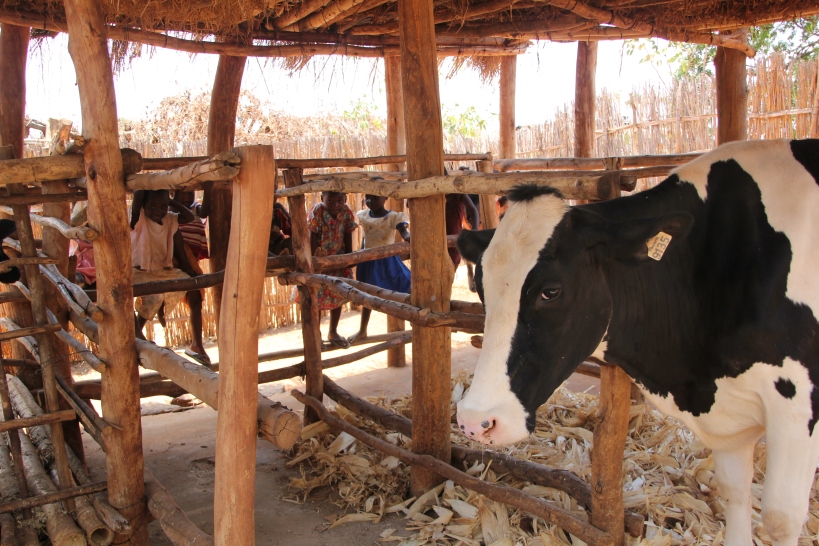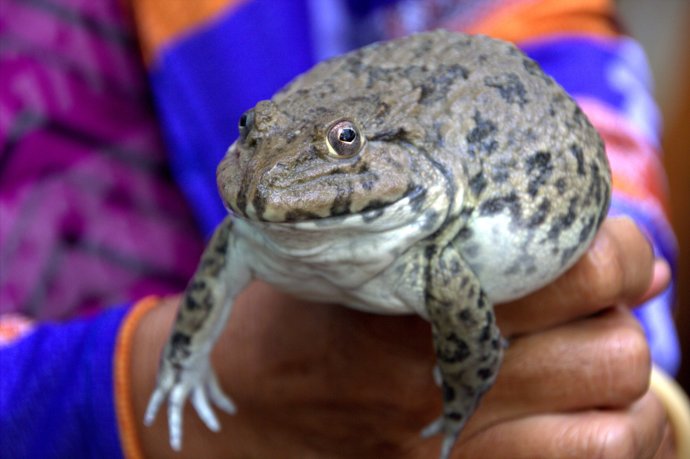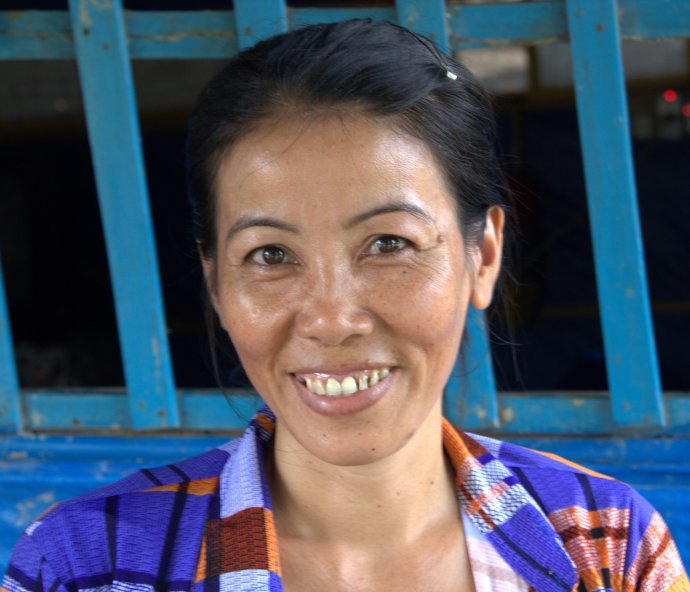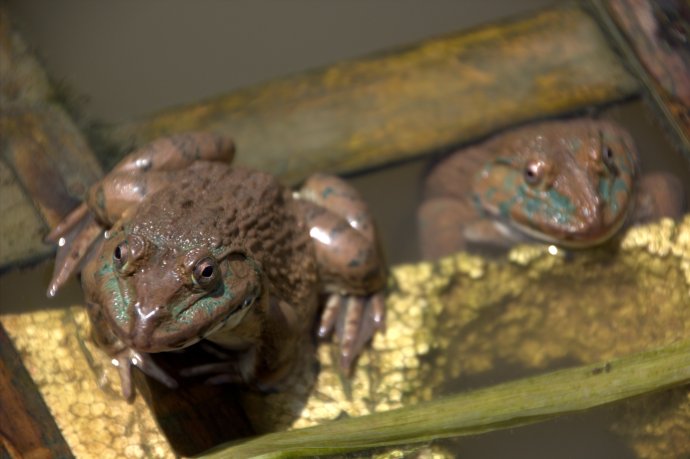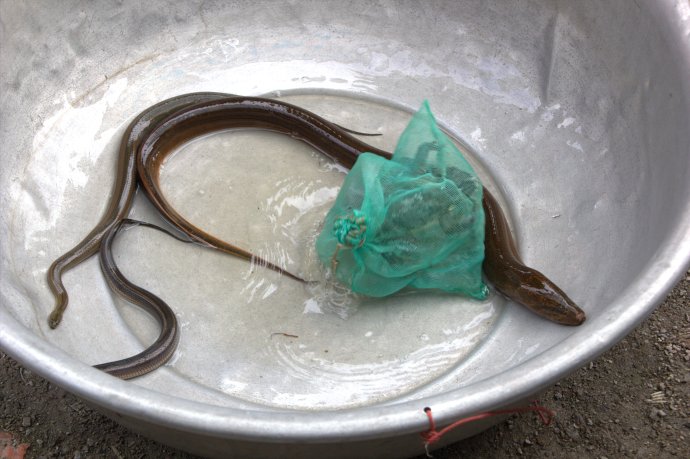 My hands-down favorite day in Malawi – and one I will never forget — is the day we visited Chimuti village in Mchinji District and the women dragged me into the “kitchen” to cook the national dish of nsima, a white, corn-powder concoction that looks like grits-on-steroids and tastes blandly divine.
My hands-down favorite day in Malawi – and one I will never forget — is the day we visited Chimuti village in Mchinji District and the women dragged me into the “kitchen” to cook the national dish of nsima, a white, corn-powder concoction that looks like grits-on-steroids and tastes blandly divine.
Chimuti lies right near the border of Malawi and Zambia, and it’s a town so full of dazzling women and healthy cows, it’s like the poster child of what Heifer can accomplish.
Before 2011, nobody in Chimuti raised dairy cows, but once they witnessed the prosperity brought about by cows in a neighboring town, they were all in.
As we strode up to the house of Sophia Chimala, the women all began to clap and sing, and we saw her original heifer Shine, and the twins Shine had given birth to (after her first offspring was passed along to another needy family).
Sophia is 45, beautiful, and spunky as all get-out. It was she who led me into the smoke-filled kitchen (that had me crying my eyes out after a minute or two) and told me to get to work with my two sous-chefs, Miss C & Miss P.
And so I did get right down to work.
Here’s what we made.
First, the beautiful vegetable dish: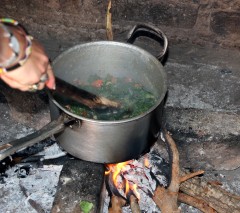
Cut up leaves of the bean plant. Cook for ten minutes with some salted water in the pot. Add 3 cut-up tomatoes. Add ¾ of a dish of  ground peanuts (pounding them by hand and then sifting through basket weave requires a whole set of skills that I don’t possess – but my attempts sure amused everyone.) Cook the vegetables and nuts another minute and salt to taste. Don’t make Miss P. roll her eyes by requesting a hot pad to pick up the scalding pot cover … they never use them but somehow don’t get burned.
ground peanuts (pounding them by hand and then sifting through basket weave requires a whole set of skills that I don’t possess – but my attempts sure amused everyone.) Cook the vegetables and nuts another minute and salt to taste. Don’t make Miss P. roll her eyes by requesting a hot pad to pick up the scalding pot cover … they never use them but somehow don’t get burned.
For Nsima:
Bring 3-4 cups of water almost to a boil. Sift in corn flour. Stir.
If lumpy, make a roux of water and flour in separate bowl and add back to the mix. Add about 5 cups of the corn flour. Stir very, very, very vigorously with a paddle – up and down, over and under, until you’re about ready to drop. Don’t mind if Miss C strongly urges you to stir a lot harder.
When it’s thickened, using a special spoon, dip in water then ladle out a mango-sized scoop of the mix, and plop it onto the plate, then dip the ladle in water again and use the back to carefully smooth the top into a big egg-like mound. Don’t forget to dip in water between every scoop or you will make Miss P very unhappy. Arrange the identical mounds of nsima carefully and make the plate look pretty.
Wash all the dishes you will be using (and don’t forget to rinse thoroughly). Clean pots with a bamboo branch and pretend you are not vastly entertaining every village child in sight.
Serve the women and children outside, and serve the men inside. (And keep your mouth shut about that arrangement.) Be grateful that the children pretend that this is the best nsima they have ever eaten. 
Pretend you also fixed the fall-off-the-bone tender, mouth-watering chicken that Misses C & P made this morning.
Stanch the river of tears still pouring out of your eyes from the kitchen fire smoke.
Eat one of the best meals of your life…
…with some amazing, beautiful women (who were allowed to eat indoors), including the lovely Miss Sophia…. 
…and Heifer’s project manager, aptly named Grace, who after lunch took us to visit some more beautiful cows and farmers in the village.
See new tin roofs going up, cement floors being poured, healthy children, and the prosperity that these big Friesian heifers from Heifer have brought to Mchinji. 
Then visit Heifer’s BUA milk collection center that will allow 200 families from multiple villages to aggregate their milk and sell it commercially — a whole new income stream!
Finally, thank God (and Heifer’s Victor Mhango, who master-minded my cooking initiation) for this amazing Mchinji day!! Farewell, beautiful Malawi …..

